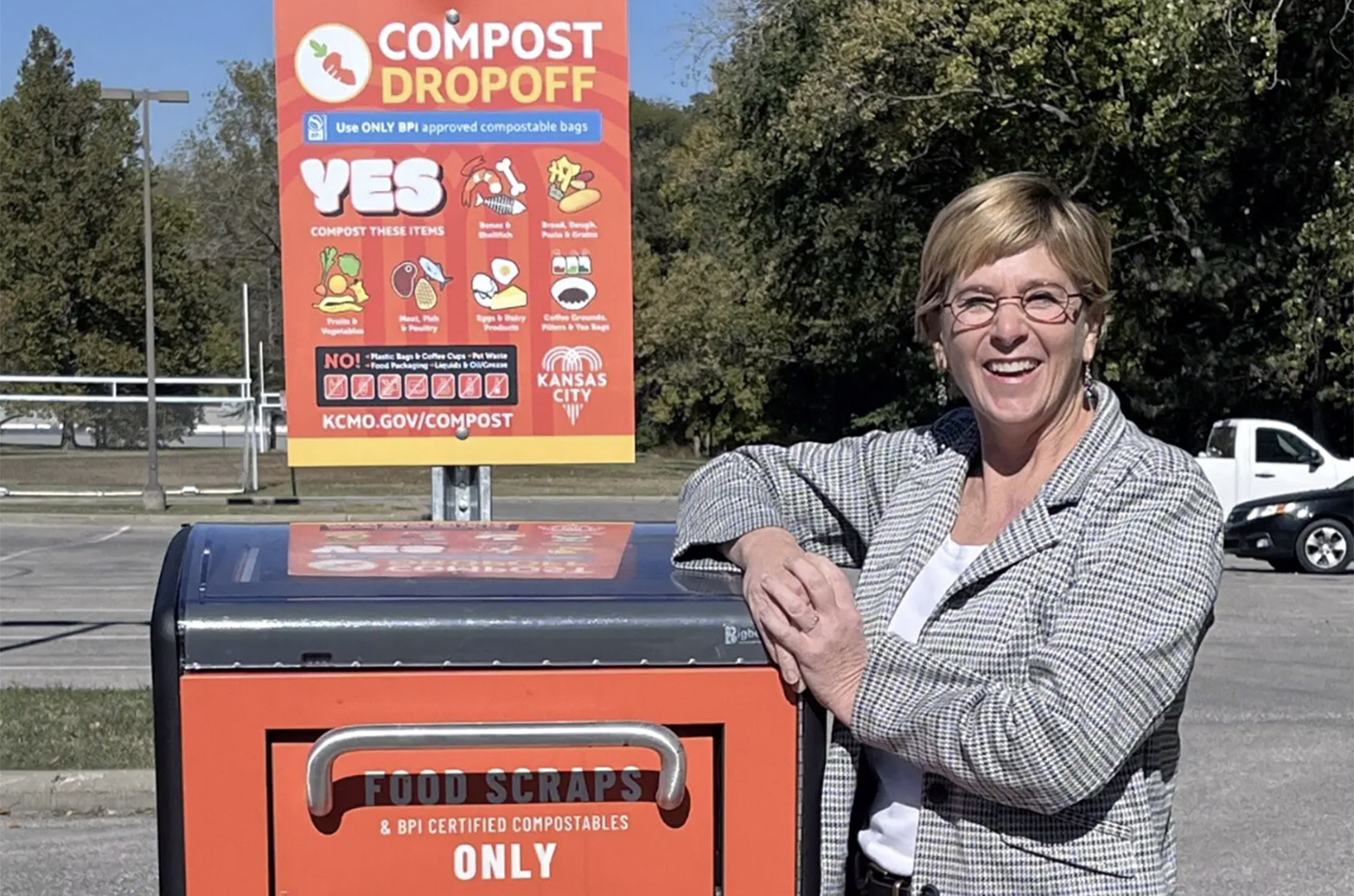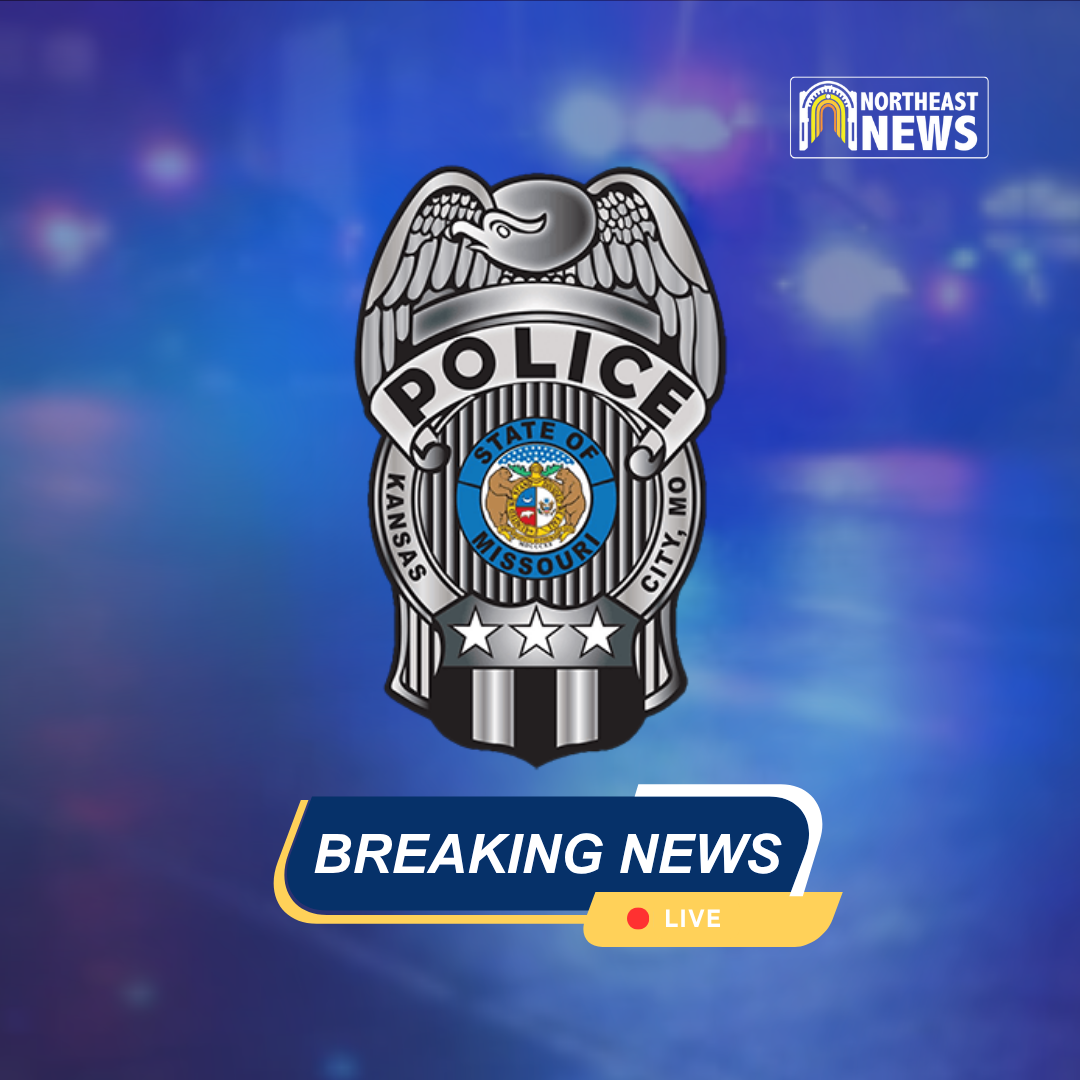 By Paul Thompson
By Paul Thompson
Northeast News
There’s a simple message adorning a t-shirt that hangs in the lobby of The Arts Asylum – a self professed “safe place to create” that resides in the heart of Kansas City’s urban core, at the corner of 9th and Harrison.
It says ‘get committed.’
The message is more than a clever play on words, though it is decidedly that. It’s also a reference to The Art Asylum’s previous life as Cavalry Baptist Church. Executive Director Courtney Perry says that the message resonates with her because churches have historically been places for people to seek asylum. In that sense, Perry is happy to say that Arts Asylum is still happily accepting patients; all they have to do is get on the waiting list.
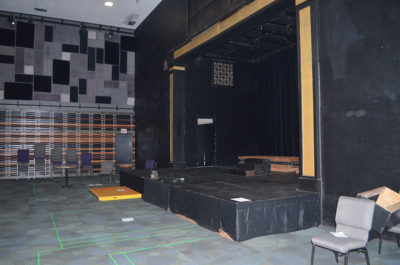
Now five years old, the Arts Asylum provides studio space at a cost of $1 per square-foot to 26 area artists in a variety of fields. From traditional oil painters to aerial artists to world-class balloon artists to a custom action figure creator, the Arts Asylum provides that safe space to create for artists of all ilk. Last summer, though, the organization challenged itself to be even more impactful. That began with a complete renovation of the theater, which serves as the focal point of The Arts Asylum. The work was completed in January, and the effort was rewarded when the Barn Players – an established production outfit from Mission, Kansas – agreed to move to The Arts Asylum from the suburbs and establish a new home in the urban core. The addition of the Barn Players is expected to help solidify The Arts Asylum’s previously wide-ranging and far-flung schedule of performances.
“There was one week in here that we had a CD release party, a fashion show, a senior thesis project where (the student) actually turned the whole space into a legit carnival – like, covered the floor in straw and brought in caravans,” said Perry.
To be sure, Art Asylum’s two-person staff of Perry and programming director Korey Childs have enjoyed where they’ve been. But both staff members say that to get where they want to go, they needed a regular tenant like the Barn Players to provide them with more opportunities to enrich programming.
“We are the ones who are moving chairs, plunging toilets, and booking the gigs. We kind of have to do it all,” said Perry. “So much of the building is focused in the theater; there’s another 20,000 square feet that houses our resident artists and all of that. I think we can kind of now really try and focus on the other half of the building.”
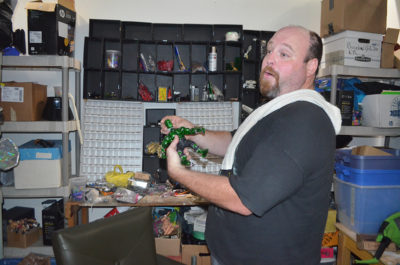 Oh yeah, the other half of the building: it’s pretty special, too. The action figure creator, Brad Roselli of Top Tier Figures, was in his studio during the Northeast News’ tour of the facility. The depth of his skill was quickly apparent. In addition to producing custom action figures for recognizable names like the guys from American Pickers – a signed and sealed box of stars Mike Wolfe and Frank Fritz was signed in his studio – Roselli also produced action figures of himself and his young son. At the time of the tour, he was working on creating an entire miniature set for one of his clients. In the studio of the balloon artists, dozens upon dozens of latex balloons were systematically categorized along an entire wall full of plastic crates. The owners of that business were out of town at the time, serving as headliners at a balloon art convention. Another studio space on the same floor serves as a workshop for an artist who builds custom stained-glass windows.
Oh yeah, the other half of the building: it’s pretty special, too. The action figure creator, Brad Roselli of Top Tier Figures, was in his studio during the Northeast News’ tour of the facility. The depth of his skill was quickly apparent. In addition to producing custom action figures for recognizable names like the guys from American Pickers – a signed and sealed box of stars Mike Wolfe and Frank Fritz was signed in his studio – Roselli also produced action figures of himself and his young son. At the time of the tour, he was working on creating an entire miniature set for one of his clients. In the studio of the balloon artists, dozens upon dozens of latex balloons were systematically categorized along an entire wall full of plastic crates. The owners of that business were out of town at the time, serving as headliners at a balloon art convention. Another studio space on the same floor serves as a workshop for an artist who builds custom stained-glass windows.
“We had someone on the third floor who sells $6,000 paintings and doesn’t even blink an eye, and was working with one of our other artists who is a 70-year-old piano teacher who does paper cutting,” said Childs. “He was helping her establish a social media presence, and that was outside of her mind. She was just creating for herself. Since then, she has sold some of her work and now has operational income to continue to go forward.”
In addition to co-habitating, all of the artists are encouraged – but not required – to collaborate. Along with their individual studio space, each artist has access to the Ann K. Brown co-lab, a multi-purpose work space located on the main floor of the building. The co-lab, named in honor of a former resident photographer who passed away, provides space and materials for artists to work in a collaborative setting. Beginning this year, it will also serve as a visual arts classroom to high school students studying at Crossroads Charter Schools.
“One of the big models of Crossroads as a whole is that they really utilize the downtown area,” Perry said. “The kids take the streetcar to their fields trips, and the Quality Hill kids use an actual city park – Case Park on the west side of downtown – as their playground. They really try and invest and make citizens of downtown.”
Now The Arts Asylum is the beneficiary of that urban investment. The organization has hired three teachers for the Crossroads students, and classes have already begun. With the co-lab high school classes, the Arts Asylum has basically one goal in mind.
“How are you going to make sure that you are inspiring those young artists?” Childs says.
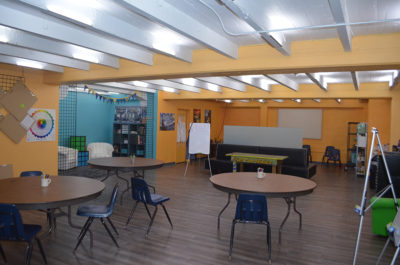 Though the high school classes have only just begun, Perry and Childs have already begun to dream about expanding the program to other charters and private schools in the area, including those in the Historic Northeast. The pair believes that the Crossroads program can serve as a “stepping stone” with other entities, though they know the program will have to show positive results before other schools jump on board.
Though the high school classes have only just begun, Perry and Childs have already begun to dream about expanding the program to other charters and private schools in the area, including those in the Historic Northeast. The pair believes that the Crossroads program can serve as a “stepping stone” with other entities, though they know the program will have to show positive results before other schools jump on board.
“A lot of schools need a paper trail to show that it is successful and that we’re not just a bunch of yahoo’s,” said Childs with a smile.
Even beyond education partnerships, The Arts Asylum has great ambitions for the future. When asked what’s next for the space, Childs begins listing off priorities – starting a dance studio, diving into the culinary arts, creating a rooftop garden. At the asylum, creativity never ceases.
 Perry added that she’d just like to see The Arts Asylum continue to embrace every opportunity it receives to change minds about what’s possible in Kansas City’s urban core.
Perry added that she’d just like to see The Arts Asylum continue to embrace every opportunity it receives to change minds about what’s possible in Kansas City’s urban core.
“There’s this amazing architecture on the outside of the building, and it’s got all these historic qualities, and it’s sort of ominous. But then they come in, and it’s like this whole other place,” Perry said. “I hope it just stays more of the same, but in a really good way. We’re in this amazing trajectory of just going upwards.”


